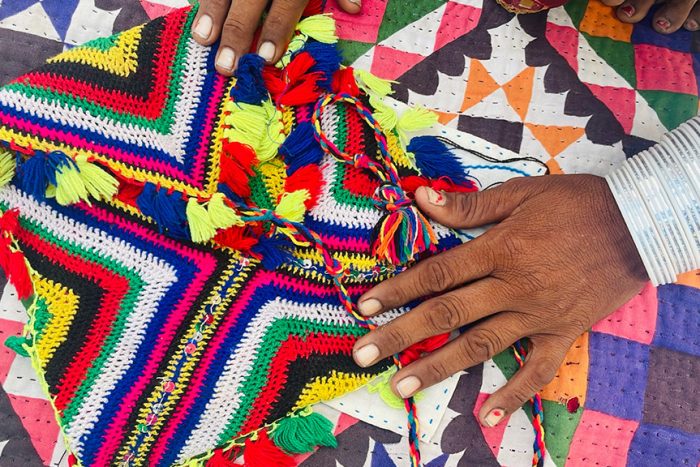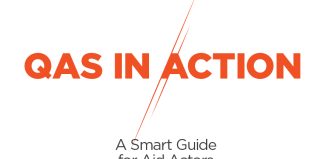Threading Progress
In a straight line, Old Subhani lies 30 kilometres due east of Umerkot town; it is a tad longer by the tarmac road. Here Jagisa is a member of the Advisory Committee established in October 2022 after the Community World Service Asia’s training sessions under the HERD project. She says she did not miss a single session. Jagisa is the kind of person who needs no prompting to speak and is quick to relate how being a part of the embroidery makers of Taanka she learned at least one new stitch she had never known before.
“Hurmuchi is a stitch that adds so much value to our work. Earlier we were doing straightforward applique rallis. Now there is greater variety in our products,” says Jagisa. “Just a year before the training a typical ralli bedspread would sell for no more than PKR 800 (Approx. USD 2.8) in the village. It would fetch the same price in Umerkot.”

Now a ralli of the same size fetches PKR 1500 (Approx. USD 5.3) in the village. The better design has greater demand in Umerkot where their menfolk sell them. And if the men only knew the art of haggling, they could get a couple of hundred rupees more. The Taanka group in Old Subhani is also turning out traditional Sindhi embroidered caps. Jagisa relates that the contractor supplies them the raw material and pays labour at PKR 1000 per cap (Approx. USD 3.5). Normally, it would take any woman fifteen to twenty days to turn out one of the more intricately patterned cap. A simpler one takes under ten days. However, if they get their own material, Jagisa says their profit would be in the range of PKR 800 (Approx. USD 6.3).
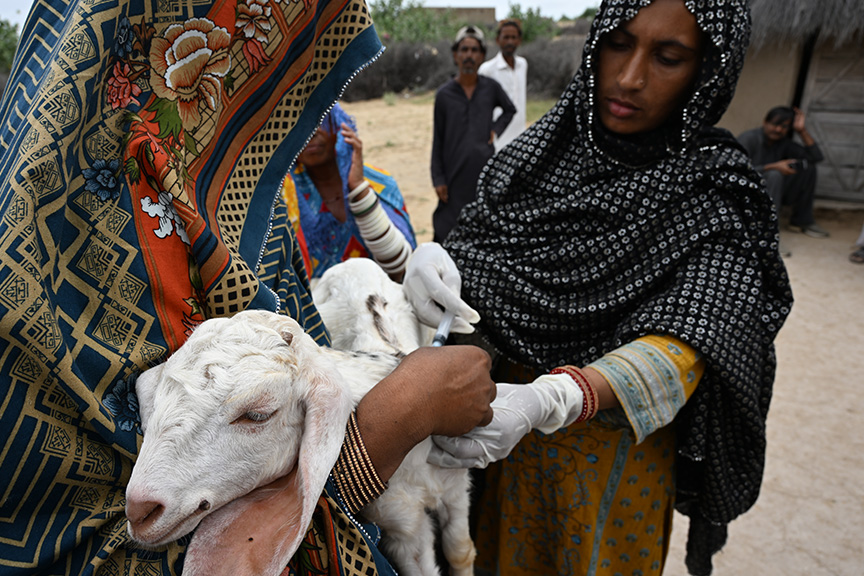
Kasuba, also a member of the Taanka group, points out that this new stitch being unknown in their village before the training, is now practiced by every applique maker. She says there were several young women who had not joined the training sessions and she has taken it upon herself to teach hurmuchi to all those women and even much younger girls.
Speaking of the drought of 2021, Lakhma, a member of the Resolution Committee, says it was a sort of blessing in disguise for the village. In such a situation in the past, leaving a man or two in each para (precinct) of the village, the community would migrate to the irrigated districts west of Umerkot. “First off, we got monthly rations for six months from CWSA which obviated the need to migrate. That meant our children who would be pulled out of school continued their education. Then we also got two goats per household and that was all the more reason to stay put,” she says.
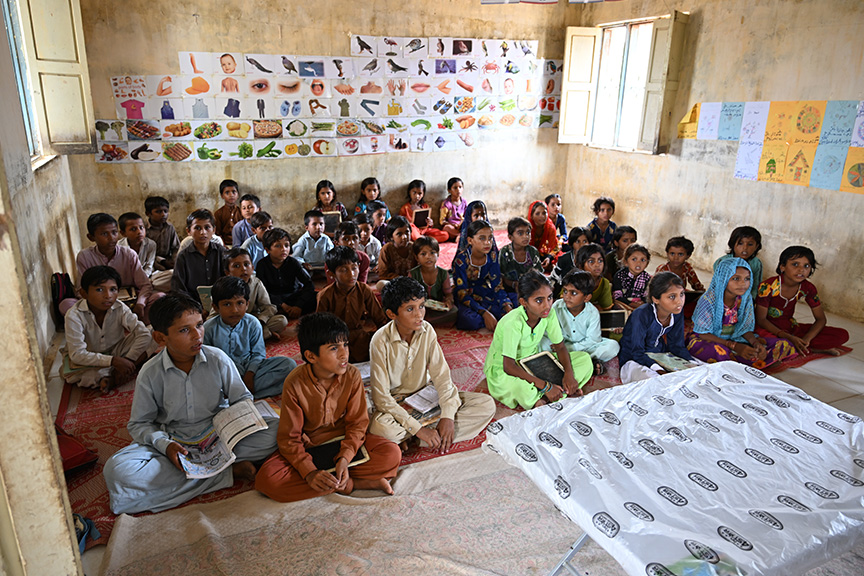
Lakhma points out how the long trek to the irrigated area sometimes killed off their livestock. But for some years now, they no longer walk as it was before the web of tarmac was laid across the desert. Now they can get on the taxis that zoom around the desert. But living away from home was never free of insecurity and discomfort. There they had to build their temporary shelters of bamboo and wattle, usually open on one side and without a door leaving no room for privacy. “We did not migrate either in 2022 or this year, our children have remained in school and we are in our own homes,” she says.
Now, July has always been the start of the cotton picking season in the canal-irrigated districts and that was one activity the women of Thar never missed. Though the work was very hard, it nonetheless meant good money. But this year when the contractor came to recruit pickers from Old Subhani, Lakhma saw a relative and her husband preparing to go. “They would have been gone for two months and school was reopening in August. I told them to stay. There was plenty of work with the road building crews near the village. Here the men work during the day and come home to sleep with the family,” she says.
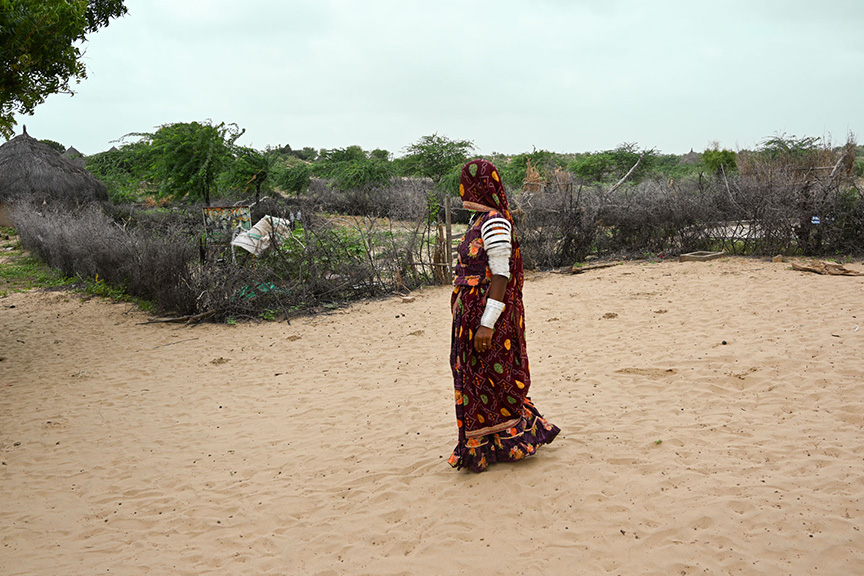
Convinced by Lakhma’s argument, the family turned down the contractor’s offer and stayed. The man and his older son are now employed on a road crew and as Lakhma said, both men return in the evening to sleep in their own home. And they together have PKR 1500 to show for their labours. She believes this being the only family that almost went and then didn’t in the end, it was the last time the cotton contractor called upon them. “He knows our ways have changed,” she adds.
On a more physical level, the village is turning green: women are planting trees in their courtyards. Besides the usual ber fruit (Genus Zizyphus) and date palm, women are experimenting with chikoo (sapodilla) and having heard from nearby villages that they do well, are also planting lemon trees.
A new level of awareness is now upon all the women who have undergone the CWSA training sessions. From Old Subhani and other villages, one hears a common refrain on how the gender awareness sessions have helped these communities. Customarily, men were served food first and the best of it too. Women satisfied themselves later with the leftovers. Now families dine together and the menu is shared out equally among girls and boys. The thought is banished that men having to go out to labour required better food. Now, they are mindful of the fact that tending livestock, fetching water from the well and keeping the home clean was also labour intensive.
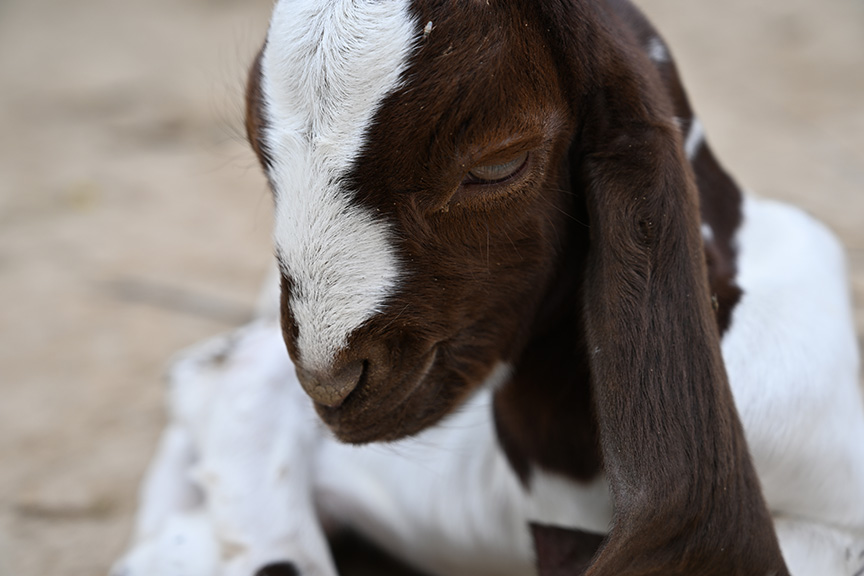
Kasuba points out that chores outside in the fields are done collectively and when they are finished they collect firewood on the way back. She says that her son returns from school at 2:00 in the afternoon and after his meal, goes out to fetch water and firewood. Time was when firewood collection was considered manful enough, fetching water was strictly a woman’s job. Across the Thar Desert, the greatest mark printed in the sand by CWSA is the reason for communities to abjure the annual transmigration to join the wheat harvest and later cotton picking as a means of earning a livelihood. Their staying home means children who would otherwise have migrated with them in March and lost out two months of schooling before the summer vacations, now continue their education.





